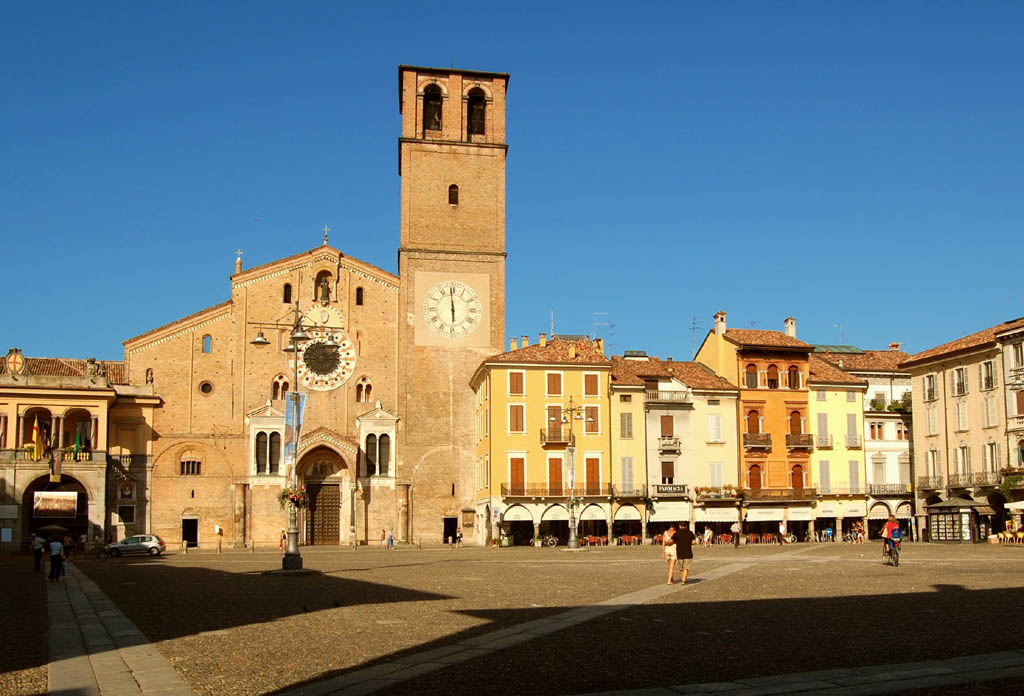
The city of Lodi is located south of Milan along the
Adda River in the Po Valley.
It was founded by the Celts and then became Roman under the name Laus Pompea. After the fall of the Holy Roman Empire and the barbarian invasions he did not want to submit to Milan that wanted to take over the lands and waters of Mediterranean Lombardy.
At the end of violent and bloody conflicts the city was completely destroyed. Emperor Frederick I Barbarossa, who struggled to dominate the rebellious Po cities, had the city rebuilt to subscribe the Lodigians and seek their loyalty.
In 1220, Lodi, together with
Milan, dug an irrigation channel that came out of the Adda north of Lodi and returned south of the city and with many rodges and collectors, reclaimed the marshy terrain in a fertile territory and suitable for crops and farms. This work was absolutely unique in the Middle Ages and still works, a sign of the extraordinary capacity for hydraulic engineering.
Among the monuments to visit you will find the
Duomo, whose construction began in 1160 and ended in the fourteenth century. The facade with lions and sculptures flanked by the imposing bell tower and the interior is composed of three richly frescoed naves.
The
Church of the Incoronata is also very beautiful, all richly decorated in blue or gold and with an octagonal plan. The territory of Lodigiano is known as a land of goodness, in fact it produces excellent Grana Lodigiano and how to forget the fantastic traditional desserts such as tortoniata based on short pastry and lots of butter!
This guide has been translated automatically through a third party service. Visititaly offers these automatic translations to help site visitors, however the automatic translations may contain inaccuracies, errors or inaccuracies. You can contact us to report inaccuracies or errors and we will check the translation.